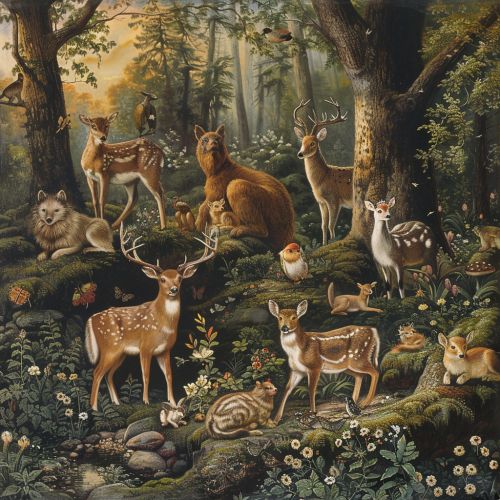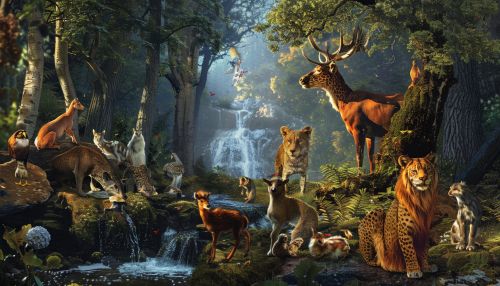Fauna
Introduction
Fauna refers to all the animal life present in a particular region or time. The corresponding term for plants is flora. Fauna and flora are the collective terms for the plant and animal life of a certain era or region. The term was first used by Carl Linnaeus from Sweden in the title of his 1745 work Fauna Suecica. The term is derived from the name Fauna, a Roman goddess of earth and fertility, the Roman god Faunus, and the related forest spirits called Fauns.
Classification of Fauna
Fauna can be classified in several ways, including by region, by kind, and by time period. The three types of regional fauna are: Cosmopolitan, Endemic, and Oceanic. Cosmopolitan fauna are species that can be found all over the world. Endemic fauna are species that are native to only one region. Oceanic fauna are species that live in the oceans.


Cosmopolitan Fauna
Cosmopolitan fauna are species that can be found all over the world. These species have adapted to live in a variety of different environments. Examples of cosmopolitan fauna include rats, pigeons, and humans. These species are often highly adaptable and able to survive in a variety of different environments.
Endemic Fauna
Endemic fauna are species that are native to only one region. These species are often highly specialized and adapted to their specific environment. Examples of endemic fauna include the koala in Australia, the lemur in Madagascar, and the Galapagos tortoise in the Galapagos Islands.
Oceanic Fauna
Oceanic fauna are species that live in the oceans. These species can be further divided into pelagic (open ocean), demersal (near the bottom), and benthic (on the ocean floor). Examples of oceanic fauna include the great white shark, the giant squid, and the blue whale.
Fauna by Kind
Fauna can also be classified by kind. This classification includes: Invertebrates, Vertebrates, and Microfauna. Invertebrates are animals without a backbone, Vertebrates are animals with a backbone, and Microfauna are microscopic animals.
Invertebrates
Invertebrates are animals without a backbone. This group includes a wide variety of animals, including insects, spiders, worms, and mollusks. Invertebrates make up the vast majority of animal species on Earth.
Vertebrates
Vertebrates are animals with a backbone. This group includes mammals, birds, reptiles, amphibians, and fish. Vertebrates are the most complex of the animal species and include humans.
Microfauna
Microfauna are microscopic animals. These animals are often single-celled and include protozoa and other microscopic organisms. Microfauna play a crucial role in many ecosystems, including in the decomposition of organic material.
Fauna by Time Period
Fauna can also be classified by time period. This classification includes: Prehistoric Fauna, Ancient Fauna, and Modern Fauna. Prehistoric Fauna are animals that lived before recorded history, Ancient Fauna are animals that lived during recorded history but are now extinct, and Modern Fauna are animals that are currently alive.
Prehistoric Fauna
Prehistoric fauna are animals that lived before recorded history. This group includes a wide variety of animals, including dinosaurs, mammoths, and saber-toothed cats. These animals are known from fossils and other archaeological evidence.
Ancient Fauna
Ancient fauna are animals that lived during recorded history but are now extinct. This group includes animals like the dodo, the passenger pigeon, and the Tasmanian tiger. These animals often went extinct due to human activity.
Modern Fauna
Modern fauna are animals that are currently alive. This group includes all the animals that we are familiar with today, from the smallest insects to the largest whales.
